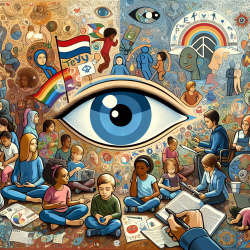Onchocerciasis, commonly known as river blindness, is a parasitic disease prevalent in sub-Saharan Africa. Recent studies have highlighted a significant association between onchocerciasis and epilepsy, termed Onchocerciasis-Associated Epilepsy (OAE). This link presents both challenges and opportunities for healthcare practitioners working in affected regions. By understanding the burden of OAE and implementing research findings, practitioners can significantly improve patient outcomes and contribute to the broader public health landscape.
Understanding the Burden of OAE
The research article "Burden of onchocerciasis-associated epilepsy: first estimates and research priorities" provides critical insights into the prevalence and impact of OAE. According to the study, approximately 117,000 people were affected by OAE in 2015 across onchocerciasis-endemic areas previously under the African Programme for Onchocerciases Control (APOC) mandate. In areas where OAE has not been investigated, an additional 264,000 cases were estimated. The total years of life lived with disability (YLD) due to OAE was calculated to be 39,300 and 88,700 in these respective areas.
The Socioeconomic Impact
OAE not only affects health but also imposes a significant socioeconomic burden on families and communities. The cost of treating OAE with anti-epileptic drugs was estimated at a minimum of $12.4 million USD in 2015. This figure underscores the need for increased financial resources and strategic planning to address both direct medical costs and indirect impacts such as lost productivity and social stigma.
Implementing Research Findings
For practitioners, applying these research findings involves several key actions:
- Collaboration: Foster partnerships between onchocerciasis control programs and mental health services to provide comprehensive care for patients with OAE.
- Resource Allocation: Advocate for increased funding to support treatment initiatives and community education programs.
- Training: Equip healthcare workers with the skills needed to diagnose and manage epilepsy effectively within resource-limited settings.
- Community Engagement: Work closely with local communities to reduce stigma associated with epilepsy and promote adherence to treatment regimens.
Encouraging Further Research
The study also identifies several research priorities that can guide future investigations:
- Causality Studies: Conduct fundamental research to explore the biological mechanisms linking onchocerciasis and epilepsy.
- Epidemiological Surveys: Perform surveys in under-researched areas to gather comprehensive data on OAE prevalence.
- Treatment Efficacy Trials: Investigate the impact of mass drug administration (MDA) programs on reducing OAE incidence.
By engaging with this research agenda, practitioners can contribute to a deeper understanding of OAE and help shape effective interventions that transform lives.
To read the original research paper, please follow this link: Burden of onchocerciasis-associated epilepsy: first estimates and research priorities.










